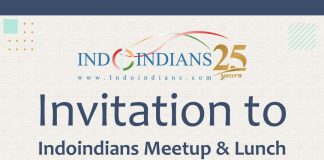Have you ever woken up with a sharp pain in your neck or a muscle spasm in your back? It’s awful! Back pain is the most common culprit for absenteeism in the workplace and it may cause you to miss out on many other activities in your daily life.
It’s important for us to take good care of our necks and backs. An estimated 8 out of 10 people will experience neck or back pain at some point in their lives. Most episodes will resolve themselves without treatment, but sometimes the pain become chronic.
| Common Causes of Neck and Back Pain: |
- Muscle strain is one of the most common causes of neck and back pain. Because the muscles in the back are shorter than other muscles, they are more prone to spasm. Muscle spasms can be described as a sudden and often painful muscle contraction They can happen anywhere on the body, but back and neck spasms can be especially debilitating because it’s nearly impossible to totally avoid using the muscles in your back. Sometimes a spasm can occur at random, or when your neck or back muscles are held in an uncomfortable position too long, such as crooking your neck to talk on the phone or sleeping in an awkward position.
- Herniated discs, also called slipped discs or ruptured discs, are another common cause of back pain, and can be a bit more serious if untreated. Between our vertebrae are shock-absorbing cushions called discs. As we get older, the discs become more brittle and less resilient to strain. When a disc gets ruptured, it bulges through and puts pressure on surrounding nerves, causing back pain that often radiates down into a leg because of the compression on the nerves. If you discover you have a herniated disc, it doesn’t always mean that you need surgery, but it does mean that you need to take special care of your back, which may include physical therapy, rest or special exercises. If you think you have a herniated disc, see your healthcare professional immediately. Disc problems typically only get worse if you ignore them.
- Fractures are also responsible for neck and back pain. A fall or a severe jolt can crack vertebrae, putting the spinal cord at risk. Sometimes surgery is necessary to put the vertebra back in place.
| Easy Ways To Alleviate or Prevent Neck and Back Pain: |
- Avoid sitting in one position for long periods of time. In the office or at home, stand up and walk around at least once an hour. If you must sit, make sure you have adequate lumbar support. When reading, use a Neck Correct Reading Stand to reduce neck and strain. The durable plexi-glass stand holds reading material in a comfortable position.
- Sit up straight. Mom was right! Sitting up straight helps relieve the pains commonly associated with sitting. By using the muscles you aren’t using when slouching, the overworked, strained ones get a break. Try a Posture Rite Lap Desk. It’s ideal for reading, writing or eating in bed or in a wheelchair. A Posture Rite Lap Desk with an optional 20-degree tilt allows your neck and back to remain aligned while you use it!
- Use the right pillow. It’s imperative that you have a good, firm pillow to adequately support your neck while you sleep. And many people find that the right pillow can actually improve the quality of their sleep. An Allergy-Free Orthopedic Pillow with a raised outer edge and concave center supports the neck whether you’re sleeping on your back or your side and restores the natural curve of the spine. What’s more, the cover is impermeable to dust mites and other allergens, so you get a great night’s sleep!
- Support your neck on long car or plane trips. A Comfort Head Rest will cradle and support your neck on your journey, so you arrive refreshed and pain-free! Also, use those footrests on the airplanes they help relieve back strai






